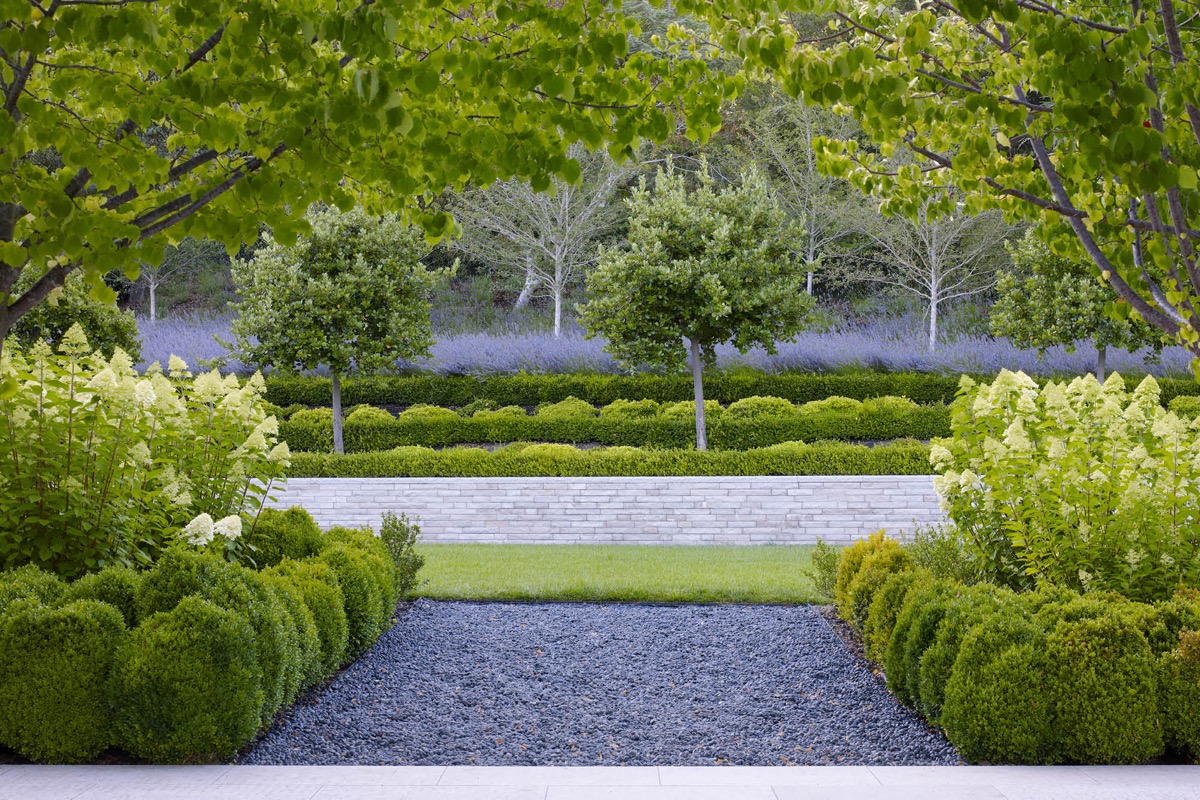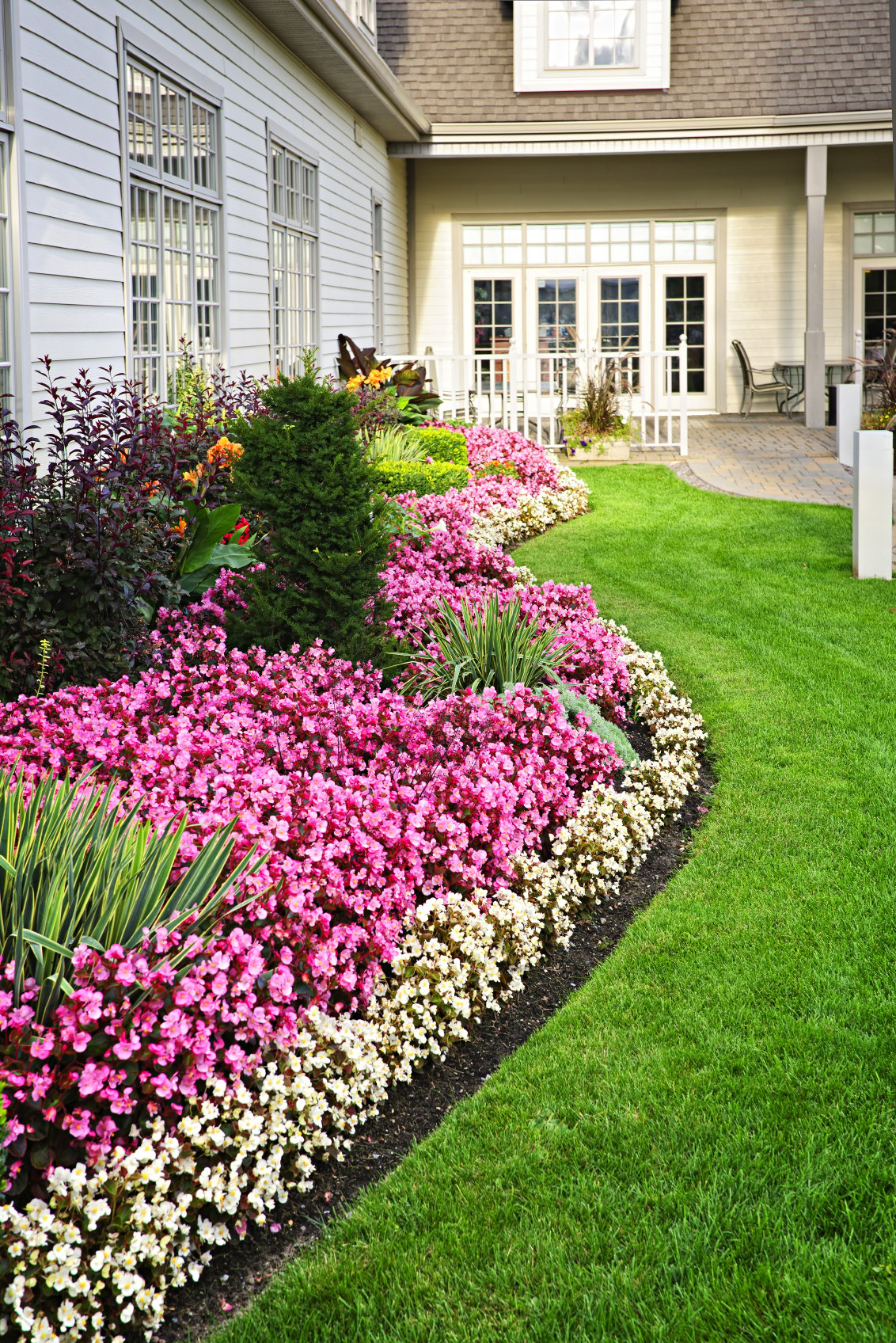The Step-by-Step Process of Professional BBQ Island Installation
Wiki Article
Checking Out Different Sorts Of Landscaping to Boost Your Outdoor Setting
Landscaping plays a vital duty in defining outside rooms. Different designs, from traditional yards to modern minimalist layouts, offer unique benefits for boosting aesthetics and function. Including elements like xeriscaping and indigenous plants can add to eco-friendly balance. Comprehending the interaction of hardscape and softscape is crucial for creating inviting settings. The selections available can be overwhelming, triggering one to review which style finest straightens with their vision for an outdoor shelter.Standard Yard Landscaping

While several modern-day yards welcome minimalism and native growings, standard yard landscaping remains a treasured strategy that highlights proportion, framework, and ornamental functions. This design frequently incorporates official geometric layouts, where flowerbeds, pathways, and bushes are arranged with precision. Central focal factors, such as sculptures or fountains, attract the eye and offer a feeling of harmony.Traditional landscaping often consists of a variety of plant kinds, showcasing seasonal blossoms and evergreen elements. Traditional hedges, perennials, and annuals create lively shades and textures throughout the year. Furthermore, pergolas, arcs, and trellises include vertical rate of interest and act as assistance for climbing plants, boosting the overall aesthetic.The usage of natural products, such as rock and timber, additional enhances the standard landscape, adding to a classic top quality. Eventually, this style invites leisure and enjoyment, making it a cherished choice for those seeking a stunning exterior setting.
Modern Minimalist Landscaping
Modern minimalist landscape design emphasizes simplicity and performance, defined by tidy lines and open rooms. Trick characteristics include a restricted plant combination and thoughtful hardscape style that focuses on functionality and visual allure. Effective plant choice methods better enhance the minimalist technique, creating peaceful outside atmospheres that motivate relaxation and contemplation.Key Characteristics of Minimalism
A growing trend in landscape design is the embrace of minimalism, characterized by simplicity and functionality. Minimalist landscaping focuses on tidy lines, open rooms, and a limited color scheme, promoting a feeling of tranquility. Aspects are meticulously curated to avoid mess, enabling each element to stand apart. Making use of all-natural materials, such as rock and wood, boosts the natural feel while maintaining a visual balance. In addition, minimal styles typically include geometric shapes, which can produce visual rate of interest without overwhelming the senses. Water attributes may be included, working as centerpieces that improve calmness. On the whole, minimalism in landscape design highlights the elegance of restriction, permitting nature's intrinsic qualities to shine through in a harmonious exterior setting.Plant Selection Approaches
Efficient plant option is necessary for achieving the wanted aesthetic in contemporary minimal landscaping. The emphasis should get on simpleness, utilizing a minimal palette of plants that enhance each various other and the surrounding atmosphere. Native plants are typically excellent, as they need much less upkeep and water, promoting sustainability. Choosing varieties with varying structures and elevations can include visual rate of interest without frustrating the space. Grouping plants in clusters as opposed to spreading them boosts cohesion and reinforces the minimal motif. Evergreen selections can offer year-round framework, while seasonal blossoms introduce subtle color adjustments. Ultimately, the goal is to produce a peaceful outdoor room that symbolizes serenity and harmony with thoughtful plant choices.Hardscape Style Concepts
Crucial elements in hardscape style substantially add to the general aesthetic appeals and functionality of minimalist landscaping. This style method emphasizes clean lines and understated materials, creating a minimalist aesthetic experience. Trick elements include paths, patio areas, and maintaining walls, which not only specify areas but also boost access and use. Using materials such as concrete, stone, and timber prevails, mirroring an all-natural yet contemporary aesthetic. Including in proportion layouts and geometric forms further enhances the minimal philosophy, enabling a harmonious blend with bordering greenery. Additionally, correct drain and erosion control are important considerations, guaranteeing longevity and sustainability. Inevitably, efficient hardscape design functions as a structure that enhances softscape aspects while preserving equilibrium and simpleness in exterior atmospheres.
Cottage-Style Landscape design
Cottage-style landscaping offers a delightful approach to producing welcoming outdoor areas. By integrating charming plant combinations, this design fosters a sense of heat and whimsy. The emphasis on comfy, well-defined locations encourages leisure and enjoyment of nature.Charming Plant Combinations
Lots of homeowners seek to produce a stunning outdoor area, attaining the charm of cottage-style landscape design frequently pivots on thoughtful plant mixes. Vivid blooms, lush foliage, and aromatic herbs can be artfully combined to stimulate a sense of fancifulness and fond memories. For example, incorporating lavender, daisies, and foxgloves creates a vibrant tapestry that brings in pollinators while providing a delightful fragrance. Including ornamental yards like miscanthus can add structure and motion, matching the softer blossoms. In addition, blending perennial and annual plants guarantees continual shade throughout the periods. The usage of mountain climbers, such as clematis or honeysuckle, can boost upright interest. Overall, these combinations not only beautify the landscape but also foster a charming and welcoming atmosphere.
Relaxing Exterior Spaces
Producing cozy outside spaces requires a careful blend of comfort and appeal, enhancing the vibrant plant combinations located in cottage-style landscape design - Bbq Island Installation. These areas commonly include welcoming seating arrangements, such as weathered wooden benches or cushioned chairs surrounded by rich plant. Soft lights, like fairy lights or lights, includes heat, changing the space into a serene retreat. Including aspects such as trellises embellished with climbing roses or great smelling natural herbs boosts sensory experiences. In addition, pathways made of rustic rocks invite expedition and link with nature. Decorative touches like birdbaths or whimsical yard art add to a feeling of fancifulness. Inevitably, the objective is to create an enchanting atmosphere that urges leisure and satisfaction of the appeal bordering these relaxing outside sanctuariesXeriscaping for Water Conservation
How can communities balance visual landscape design with journalism requirement for water conservation? Xeriscaping arises as a viable solution, advertising sustainable practices that minimize water use while improving exterior appeal. This landscape design technique concentrates on making use of drought-resistant plants belonging to the region, which require considerably less water than standard gardens. By including mulch and effective irrigation systems, xeriscaping minimizes evaporation and runoff, more preserving valuable water resources.Communities can produce visually enticing landscapes via cautious planning, picking a diverse variety of appearances and colors that flourish in arid conditions. Additionally, xeriscaping urges the use of decorative rocks and ornamental gravel, offering eye-catching and practical alternatives to lawn lawns. As areas accept this environmentally friendly approach, they not just decrease their water consumption but additionally promote biodiversity and durability in their neighborhood ecological communities. Ultimately, xeriscaping offers as a demonstration of the harmony between visual appeal and environmental obligation.Hardscape Layout Elements
Hardscape style components play a necessary role in improving exterior spaces by giving structure and performance. These non-plant features, such as outdoor patios, sidewalks, walls, and decks, develop visual rate of interest while serving sensible objectives. Utilizing materials like brick, concrete, and stone, hardscaping adds to the overall aesthetic charm and resilience of a landscape.Incorporating hardscape aspects can specify locations within a backyard, guiding activity and motivating social communication. A well-placed pathway can attach various areas of the yard, while preserving walls can take care of elevation adjustments and prevent erosion.Furthermore, hardscape design can improve accessibility and safety, giving secure surfaces for walking or lounging. Effective assimilation of hardscape elements enhances soft landscape design, making certain a balanced outdoor environment. Inevitably, thoughtful hardscape style boosts not just the charm of outdoor rooms yet likewise their usability, making them extra inviting and functional for homeowners and site visitors alike.Outdoor Living Rooms
While outside home provide a seamless mix of convenience and nature, they work as essential expansions of a home, enhancing lifestyle and recreation. These locations can include patio areas, decks, or outdoor kitchens, developed to cultivate leisure and amusement. Bbq Island Installation. By integrating useful furniture and fashionable decor, property owners create inviting environments for celebrations or quiet evenings.The assimilation of color structures, such as awnings or pergolas, protects versus the components while maintaining an open feel. Fire pits and exterior heaters prolong usability into cooler months, providing heat and setting. Additionally, integrating lighting features improves the area's functionality after sundown, developing an enchanting evening atmosphere.Landscaping elements, such as boundaries and paths, further define these areas, directing activity and including aesthetic charm. Inevitably, outdoor space change backyards into versatile hideaways, promoting a way of life that embraces both nature and convenienceNative Plant Landscaping
Native plant landscaping stresses using aboriginal vegetation to produce lasting and unified exterior environments. This technique not only boosts biodiversity but likewise saves water and minimizes the requirement for chemical plant foods and pesticides. By selecting plants that are belonging to a specific region, property owners can guarantee that their landscapes are well-adapted to local soil and environment problems, causing reduced upkeep requirements.Additionally, native plants supply necessary environments for regional wild animals, including bees, butterflies, and birds, advertising ecological health and wellness. Landscape designs that incorporate these plants frequently feature naturalistic layouts that mimic neighborhood ecosystems, fostering a local color and link to the environment.Furthermore, native plant landscaping can contribute to dirt security and disintegration control, making it an ecologically liable option. In general, this technique not just enhances outdoor rooms but also supports the local ecosystem, producing a sustainable balance in between human task and nature.
Often Asked Concerns
Just How Can I Choose the Right Landscaping Style for My Home?
Selecting the ideal landscape design style for a home involves reviewing the building's design, environment, and individual choices. Outdoor Lighting Outdoor Lighting Installer Installer. Researching various designs and getting in touch with specialists can give advice to develop a harmonious outdoor space customized to private requirementsWhat Is the Typical Cost of Professional Landscaping Services?
The ordinary expense of professional landscape design solutions normally ranges from $1,000 to $5,000, depending on task size, area, and complexity. Homeowners need to take into consideration acquiring multiple quotes to assure they get reasonable prices and quality solution.How Frequently Should I Keep My Landscaped Backyard?
The frequency of maintaining a designed backyard commonly relies on the plants and functions present. Generally, regular upkeep every couple of weeks is recommended, with seasonal jobs boosting in regularity during optimal growing periods for perfect wellness and appearances.Are There Landscaping Alternatives for Little Urban Spaces?

Various landscape design alternatives exist for little city spaces, consisting of vertical yards, container plants, and rooftop yards. Incorporating these components can make best use of limited locations while providing plant, enhancing looks, and improving air high quality in city settings.
What Plant kingdom Are Ideal for Attracting Regional Wildlife?
The most effective plants for attracting neighborhood wildlife include indigenous blooming varieties, berry-producing shrubs, and varied grasses. These plants provide necessary food and environment, promoting a growing ecosystem that supports different birds, bugs, and little creatures. Numerous home owners look for to create a picturesque outside area, accomplishing the charm of cottage-style landscaping usually hinges on thoughtful plant mixes. Creating cozy exterior areas needs a careful mix of convenience and appeal, enhancing the dynamic plant mixes discovered in cottage-style landscape design. Native plant landscaping stresses the use of indigenous plants to create harmonious and sustainable outdoor atmospheres. Landscape develops that integrate these plants usually feature naturalistic designs that simulate regional ecological communities, cultivating a feeling of area and connection to the environment.Furthermore, native plant landscaping can add to soil stability and erosion control, making it an eco liable option. Various landscape design choices exist for little urban areas, including upright yards, container plants, and roof gardens.Report this wiki page